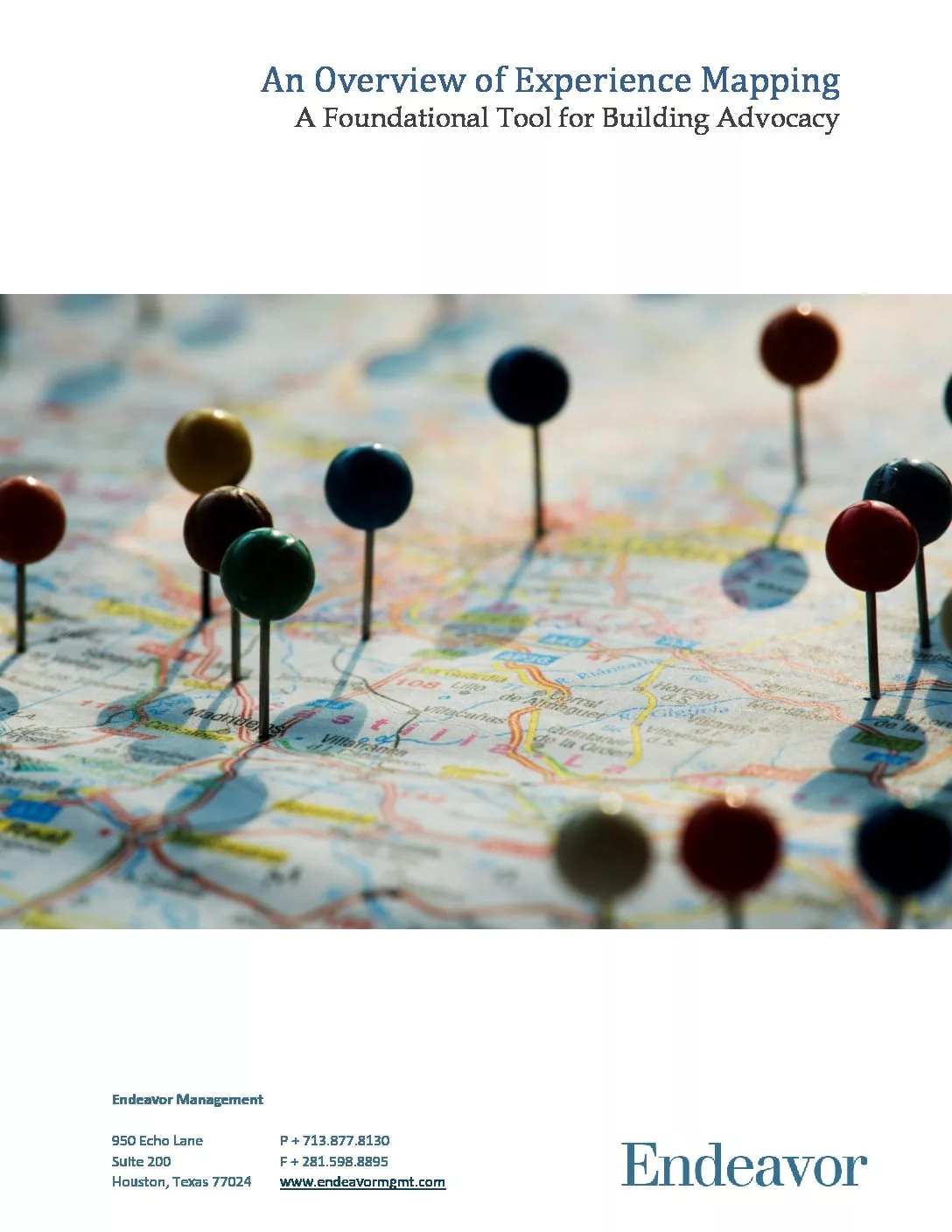
Experience Mapping for Advocacy
Experience Mapping for Advocacy
With a recognition of the importance of building loyalty and word of mouth advocacy, healthcare leaders from across the country come to us to help them assess and improve experiences. Satisfaction surveys and anecdotal feedback are a starting point, yet do not usually provide the level of depth that is needed for targeted change (such as why certain scores are low or how to improve them).
Experience mapping is an effective foundational tool that provides an in-depth understanding of the customer journey. While journey mapping and experience mapping are often used as interchangeable terms, a journey map tends to be narrower in focus and used when targeting a specific segment or customer while experience mapping allows for a broader scope and more variation in the journey. Thus, experience mapping is particularly useful when there is a lack of clarity about which parts of the journey are problematic or how multiple factors work together to impact the experience.
In this white paper, we review how to use experience mapping to understand and evaluate the total experience, with the goal of making advocates out of customers.
A Holistic Approach
Healthcare experiences are complex. It is easy to fall into the trap of focusing on only one part of the experience, resulting in siloed thinking and action-planning. To combat this, an experience map serves as a visual cue and research tool to account for the holistic experience. The experience map is a framework for obtaining voice of the customer feedback through in-depth qualitative research techniques. Unlike most satisfaction assessments, an experience map starts even before the customer’s first interactions with a hospital by examining usage of healthcare resources, perceptions of competitors, and ease of access to high quality healthcare. The experience map provides an omni-channel assessment, accounting for key touchpoints, experience stewards and communication channels at each stage of the journey.
Example Experience Map
The experience mapping process calls for individual, in-depth interviews with customers, each of which typically last about an hour. By guiding patients through a discussion about their entire experience, researchers unearth functional and emotional needs and how they change throughout the journey. In-depth interviewing provides flexibility, allowing interviewers to probe on what is ideal, best practices to emulate, and specific areas of interest – such as ideas for new services or resources. The interviews yield powerful verbatim quotes and audio clips that enable staff to understand exactly how their behavior impacts the patient experience.
While Experience Mapping is often used to assess current experiences, it can also be used for new services to understand expectations and the ideal. For example, Texas Children’s Hospital used this process to create guiding principles for their new Pavilion for Women so that patient needs were accounted for in each step of the design and planning.
Not Just for Patients
Experience Mapping is most frequently associated with patients but is also impactful with other key stakeholders, such as donors or referring physicians. With donors, the focus is designing the donor experience to create on-going inspiration to give and long-term advocacy. With referring physicians, Experience Mapping provides a detailed understanding of the referral decision-making process, an assessment of the referral experience and prescriptions for growth and increasing referrals.
As an example, Ohio State University Medical Center was able to use physician Experience Mapping to increase organization-wide awareness of the needs of referring physicians, hire a service-line specific referring relations coordinator to meet identified needs, and to create a referrer communication strategy and operational access plan.
Mapping for Action
We recommend focusing Experience Mapping research on a specific clinical area due to the wide variation of patient experiences (though this is not always necessary for interviews with referring physicians and donors). It is often the case that hospitals first focus on a pilot clinical area, and later expand Experience Mapping to other areas. For example, the University of Michigan first focused on experience of patients in their Skin Cancer Program, and late expanded to six additional high priority programs that resulted in experience standards throughout the system.
After research is complete, we facilitate action planning with cross-functional teams through workshops focused on care (behaviors), coordination (process), and communication (messaging). In these types of workshops, both marketing and clinical operations should be included, and action items should be assigned and given a deadline for completion. Research can also be translated into marketing campaigns that align messages based on the feedback, making promises that reflect the actual experience.
Experience Mapping can achieve both operational and business results given its application to patient care, process coordination, and communications. In many organizations with which we have worked, it has become a common frame of reference cross-functionally, reinforcing the connections between communications and operations.
The Process
Interested in embarking on Experience Mapping? Here’s a quick summary of the steps:
- Identify your target customer (patient, donor, referrer) and scope of focus (service area, segment of focus, clinical pathway, etc.)
- To create a customized Experience Map, define the key steps in their journey, starting from the initial need/decision-making; include key activities at each step
- Prepare for research by creating open-ended questions to guide discussions; the discussion guide should follow each stage of the Experience Map, including multiple probe questions that can be used as needed, and accounting for both functional (what was done) and emotional (how they felt about it) needs
- Identify research participants by recruiting qualified patients to participate (we usually recommend offering an honorarium for their time); it is often necessary to work with the clinical service areas to gather lists of qualified patients
- Engage with customers through structured interviews in which verbatim feedback is documented (either typed or recorded); expect interviews to last about an hour
- Carefully review transcripts from the interviews to identify themes, differences among segments and performance of activities and touchpoints at each stage of the journey
- To communicate results to others for actionable next steps, consolidate findings into a comprehensive “Voice of the Customer” report, including verbatim quotes and (if possible) short audio clips for building empathy
- Using VOC feedback as a foundation, identify spheres of action for improvement. It is helpful to focus these in the areas of care (behaviors), coordination (process) and communication (messages).
- Gather cross-functional teams for targeted prioritization and action planning, including needed resources, process improvements or training; assign timelines and responsibilities for next steps.
Resources
https://endeavormgmt.com/experience-mapping/
Let’s Talk
We will help you overcome strategic challenges to realize the business value you seek.


